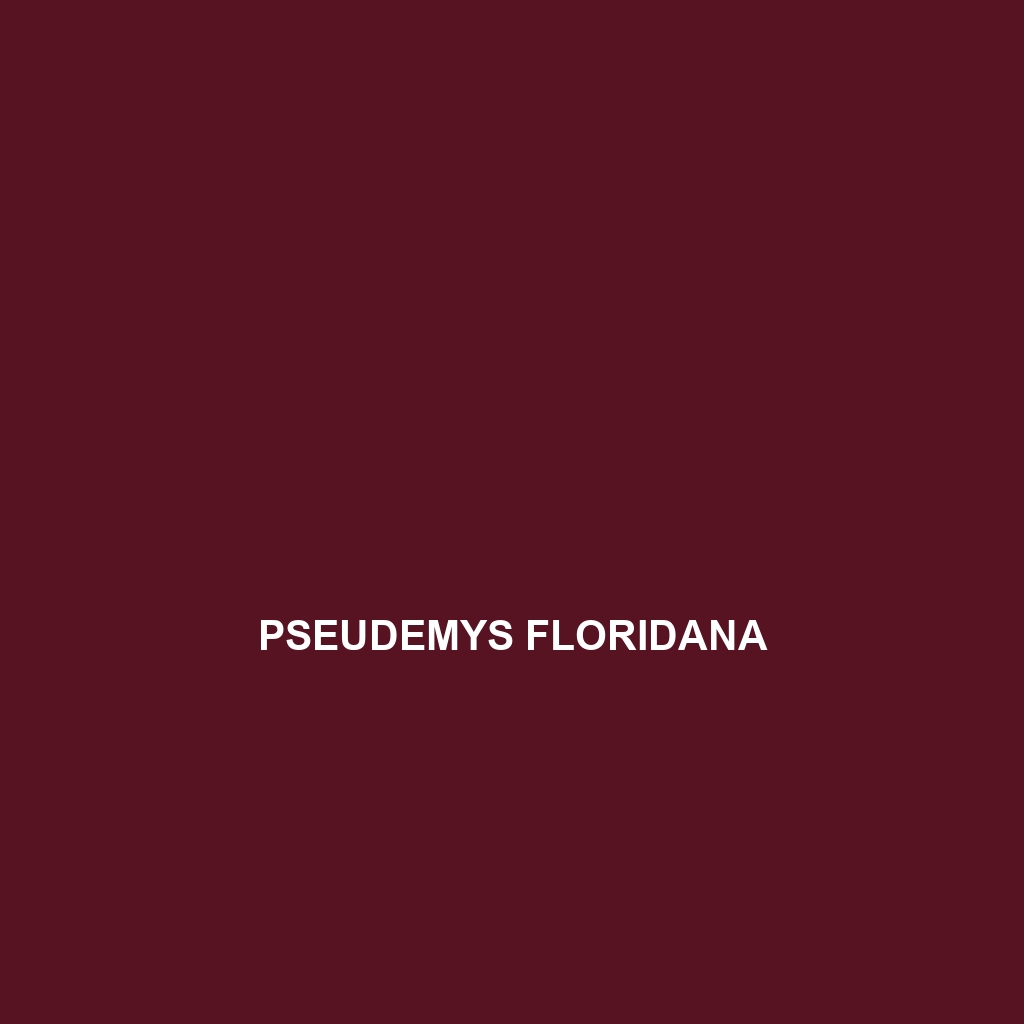<b>Pseudemys floridana</b>, commonly known as the Florida cooter, is a freshwater turtle native to the southeastern United States, recognized for its distinctive dome-shaped carapace and elongated claws. This omnivorous species thrives in warm, humid habitats, primarily feeding on aquatic plants and small invertebrates while playing a vital role in maintaining ecosystem balance.
Tag: ecological role of turtles
Podocnemis unifilis
The Podocnemis unifilis, or yellow-spotted river turtle, is a Vulnerable species found primarily in South America's freshwater ecosystems, characterized by its dark shell adorned with yellow or white spots, an herbivorous diet, and unique reproductive behaviors that occur during the rainy season. These turtles play a vital role in their ecosystem by controlling aquatic plant growth and serving as a food source for various predators.
Pseudemys floridana
<b>Pseudemys floridana</b>, commonly known as the Florida cooter, is a freshwater turtle native to the southeastern United States, recognized for its distinctive dome-shaped carapace and elongated claws. This omnivorous species thrives in warm, humid habitats, primarily feeding on aquatic plants and small invertebrates while playing a vital role in maintaining ecosystem balance.
Podocnemis unifilis
The Podocnemis unifilis, or yellow-spotted river turtle, is a Vulnerable species found primarily in South America's freshwater ecosystems, characterized by its dark shell adorned with yellow or white spots, an herbivorous diet, and unique reproductive behaviors that occur during the rainy season. These turtles play a vital role in their ecosystem by controlling aquatic plant growth and serving as a food source for various predators.
Podocnemis expansa
Discover the Amazonian River Turtle (Podocnemis expansa), a fascinating herbivorous species native to the Amazon River Basin, known for its distinct oval shell, diurnal behavior, and communal nesting practices. With a lifespan of over 50 years, these turtles play a crucial role in their ecosystem by managing aquatic vegetation and contributing to biodiversity in freshwater habitats.
Platemys platycephala
<b>Platemys platycephala</b>, commonly known as the broad-headed river turtle, is a medium-sized herbivore native to the Amazon Basin, characterized by its broad, flattened head and a shell length of 25 to 35 centimeters. This vulnerable species thrives in freshwater ecosystems, playing a crucial role in regulating aquatic plant life while facing threats from habitat loss and pollution.
Phrynops tuberosus
Discover the Yucatán River turtle (Phrynops tuberosus), a medium-sized omnivorous turtle native to the freshwater habitats of Central America, featuring a distinctive tuberculated carapace and a varied diet of aquatic plants, small fish, and invertebrates. With a vibrant habitat in tropical climates, this vulnerable species plays a crucial role in maintaining ecological balance within its ecosystem.
Pelusios rhodesianus
Discover the Pelusios rhodesianus, or Rhodesian mud turtle, a vulnerable species native to Africa's freshwater habitats, characterized by its distinctive oval-shaped shell, soft pliable skin, and omnivorous diet. These turtles play a crucial ecological role in controlling aquatic plant and invertebrate populations while showcasing unique behaviors such as basking in groups and burying themselves in mud during dry periods.
Pelusios carinatus
<p>Discover the <b>African side-necked turtle</b> (<i>Pelusios carinatus</i>), a unique aquatic reptile found in central and western Africa, characterized by its high, domed carapace and elongated neck. This opportunistic omnivore thrives in freshwater habitats, playing a vital role in ecosystem balance.</p>
Pangshura tentoria
Discover the Pangshura tentoria, a semi-aquatic turtle from southern Asia, known for its distinctive oval-shaped shell, strong webbed limbs, and adaptability in diverse freshwater habitats. This vulnerable species plays a vital role in maintaining aquatic ecosystems by consuming vegetation and regulating water quality.









